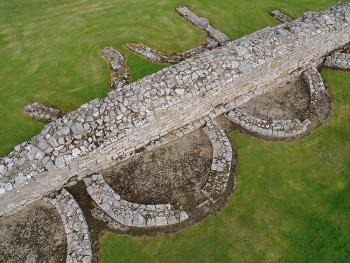American Journal of Archaeology | The Journal of the Archaeological Institute of America
You are here
The Extramural Settlement at Vindolanda in the Early Second Century CE: Defining a Glocalized Environment on the Romano-British Frontier
January 2024 (128.1)
The Extramural Settlement at Vindolanda in the Early Second Century CE: Defining a Glocalized Environment on the Romano-British Frontier
Examining the Roman military settlement at Vindolanda, this article explores the archaeology of the northern frontier of the Roman empire in a glocalization framework, investigating the site during a specific occupation period to understand how the material culture found there operated within its particular local context. The soldiers and the extended military communities of auxiliary settlements that dominated the imperial frontiers make a complicated and intriguing case study because of their origins as subaltern and conquered subjects of imperial rule, followed by incorporation into the Roman army. A close examination of the extramural settlement outside the fort at Vindolanda in the site’s Period 4 (ca. 105–120 CE) allows the opportunity to apply a glocal lens to the architecture, foodways, literacy, and dress preserved in the material record. We are presented with a picture of adoption, adaptation, and retention that ultimately can be understood only as the result of ongoing change and creation in a multilayered imperial context. These spaces and their material culture are fully analyzed here, with careful consideration of the community present at Vindolanda, in order to tease out the unique and novel outcomes that this population created in their local context.
The Extramural Settlement at Vindolanda in the Early Second Century CE: Defining a Glocalized Environment on the Romano-British Frontier
By Elizabeth M. Greene and Andrew Birley
American Journal of Archaeology Vol. 128, No. 1 (January 2024), pp. 89–116
DOI: 10.1086/727259
© 2024 Archaeological Institute of America


